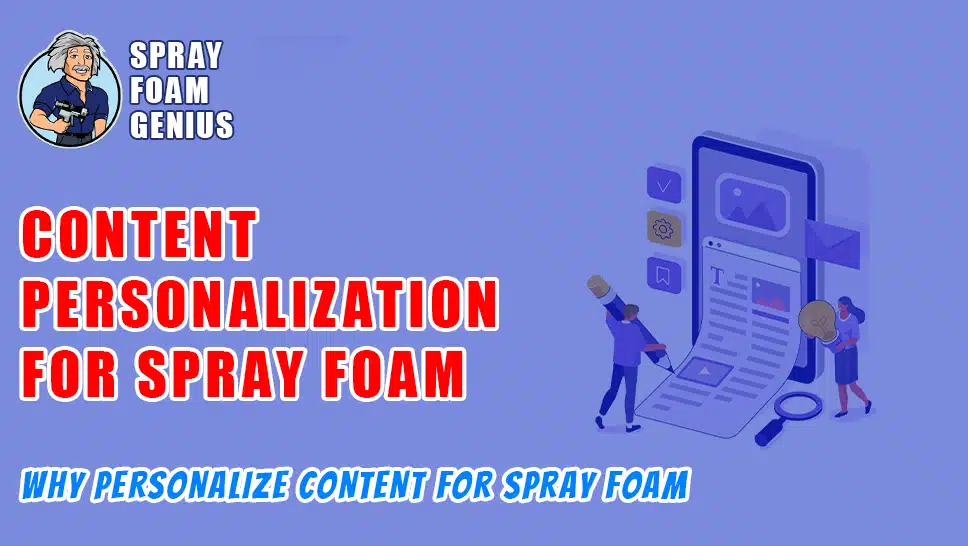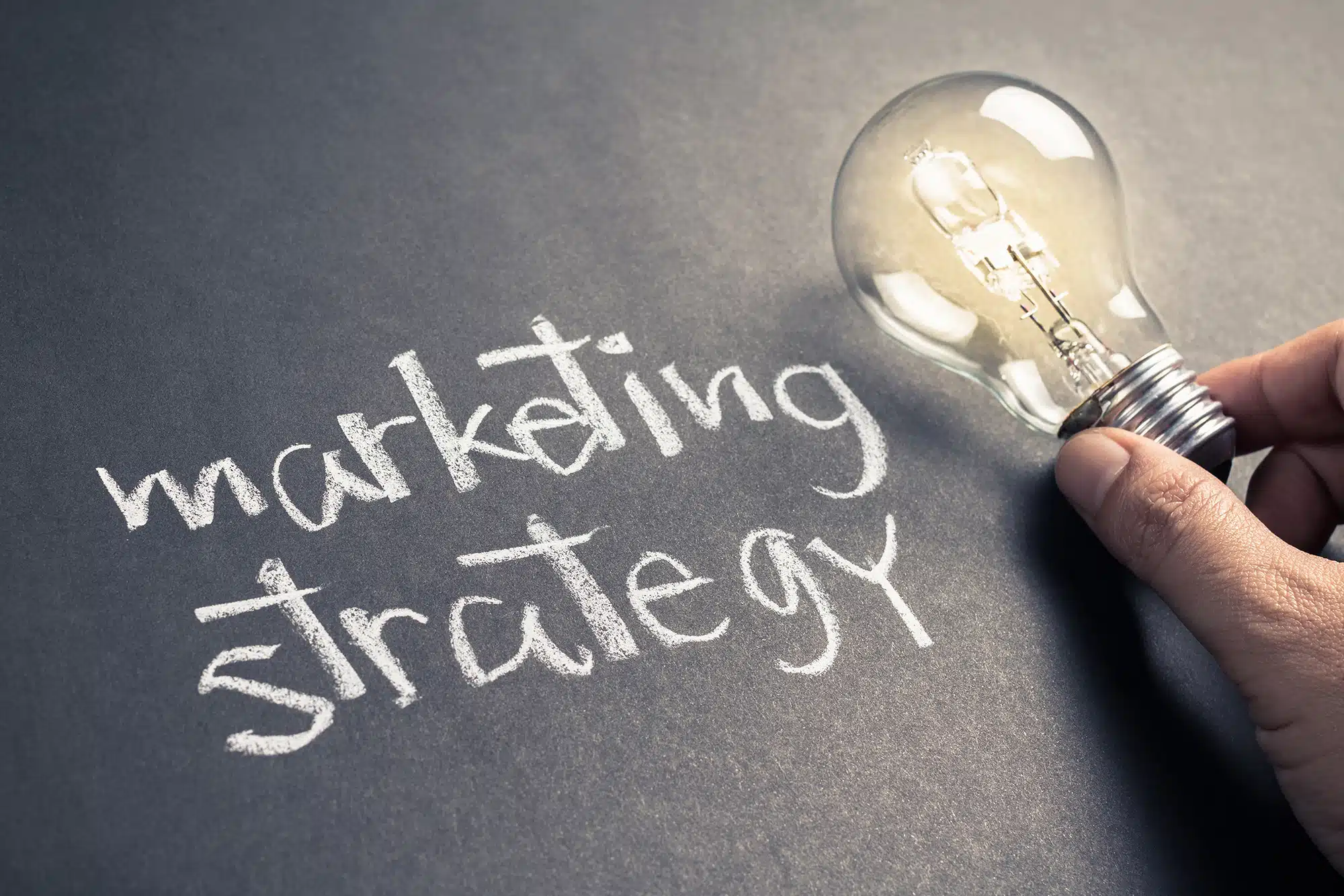
In today’s competitive market, where homeowners and businesses have endless options for their spray foam insulation needs, standing out is crucial. At Spray Foam Genius Marketing, we understand that to capture attention and convert leads, your marketing strategy must be both effective and tailored to the specific needs of your audience. One of the most powerful techniques to achieve this is content personalization. In this blog post, we’ll explore why content personalization is essential for your spray foam marketing strategy and how you can leverage it to achieve outstanding results.
The Power of Content Personalization
What is Content Personalization?
Content personalization involves creating and delivering content that is specifically tailored to individual users based on their preferences, behavior, and past interactions with your brand. Rather than using a one-size-fits-all approach, personalized content addresses the unique needs and interests of each user, making it more relevant and engaging.
Why Personalization Matters in Spray Foam Marketing
For spray foam insulation contractors, personalization helps in several key ways:
- Increased Relevance: Personalized content speaks directly to the user’s specific needs, making it more relevant and engaging.
- Enhanced User Experience: By delivering content that aligns with user interests, you create a more enjoyable and effective browsing experience.
- Higher Conversion Rates: Relevant and engaging content increases the likelihood of converting leads into customers.
The Benefits of Personalizing Your Content
1. Improved Customer Engagement
How Personalization Drives Engagement:
Personalized content resonates more with users because it speaks to their specific needs and interests. When users see content that is relevant to them, they are more likely to engage with it, whether that means clicking on an ad, reading a blog post, or filling out a contact form.
Examples of Personalized Content:
- Customized Offers: Special promotions or discounts tailored to the user’s past interactions or preferences.
- Relevant Blog Content: Articles addressing specific pain points or interests related to spray foam insulation.
2. Enhanced Lead Generation
Personalization and Lead Generation:
By providing content that aligns with the interests of your potential clients, you can attract more qualified leads. Personalized content helps in capturing the attention of users who are genuinely interested in spray foam insulation, leading to higher-quality leads.
Personalization Strategies for Lead Generation:
- Targeted Landing Pages: Create landing pages with content specific to different customer segments, such as residential vs. commercial insulation.
- Behavioral Triggers: Use user behavior data to trigger personalized content offers or follow-ups.
3. Increased Conversion Rates
Turning Leads into Customers:
Personalized content not only attracts qualified leads but also helps in converting them. When users encounter content that addresses their specific needs and pain points, they are more likely to take action, such as requesting a quote or scheduling a consultation.
How to Improve Conversions with Personalization:
- Tailored Calls-to-Action: Use personalized CTAs based on user behavior or interests.
- Follow-Up Content: Provide additional information or offers relevant to the user’s previous interactions with your brand.
4. Better Customer Retention
Building Long-Term Relationships:
Personalization doesn’t end with lead conversion. Continuing to deliver personalized content can help in retaining customers and encouraging repeat business. By showing that you understand and cater to their needs, you build stronger, long-term relationships.
Retention Strategies:
- Personalized Email Campaigns: Send follow-up emails with content relevant to the user’s previous interactions or purchases.
- Customer Loyalty Programs: Offer rewards or exclusive content tailored to your loyal customers.
Implementing Content Personalization in Your Spray Foam Marketing Strategy

Step 1: Understand Your Audience
Gathering Insights:
The first step in personalizing your content is understanding who your audience is and what they need. This involves gathering data on their behavior, preferences, and interactions with your brand.
Ways to Collect Audience Data:
- Website Analytics: Use tools like Google Analytics to track user behavior on your website.
- Customer Surveys: Gather insights directly from your customers about their needs and preferences.
- CRM Data: Analyze customer relationship management (CRM) data to understand past interactions and purchase history.
Step 2: Segment Your Audience
Creating Audience Segments:
Once you have gathered data, the next step is to segment your audience based on various criteria such as demographics, behavior, and interests. Segmentation allows you to create tailored content for each group.
Segmentation Criteria:
- Demographics: Age, location, and other demographic factors.
- Behavior: Website interactions, past purchases, and engagement levels.
- Interests: Specific interests related to spray foam insulation, such as energy efficiency or soundproofing.
Step 3: Develop Personalized Content
Creating Tailored Content:
With your audience segments defined, you can now create content that speaks directly to each group. This includes blog posts, landing pages, email campaigns, and more.
Personalized Content Examples:
- Blog Posts: Write articles addressing specific concerns or interests of different audience segments.
- Landing Pages: Design landing pages with content and offers tailored to the needs of different user groups.
- Email Campaigns: Send personalized emails with content and offers based on user behavior and preferences.
Step 4: Use Technology and Tools
Leveraging Personalization Tools:
Several tools and technologies can help you implement content personalization effectively. These tools use data and algorithms to deliver personalized content and track its performance.
Popular Personalization Tools:
- Content Management Systems (CMS): Platforms like WordPress and HubSpot offer personalization features for creating tailored content.
- Marketing Automation Tools: Tools like Marketo and Mailchimp help automate personalized email campaigns and follow-ups.
- Analytics Platforms: Use Google Analytics and other tools to track user behavior and personalize content based on data insights.
Step 5: Monitor and Optimize
Measuring Success:
To ensure that your personalized content is effective, you need to continuously monitor its performance and make adjustments as needed. This involves tracking key metrics and analyzing user feedback.
Metrics to Track:
- Engagement Rates: Monitor how users interact with your personalized content.
- Conversion Rates: Measure the effectiveness of personalized content in driving conversions.
- Customer Feedback: Gather feedback from customers to understand how well your content is meeting their needs.
Optimization Tips:
- A/B Testing: Test different versions of your personalized content to determine what works best.
- Adjust Strategies: Use performance data to refine your content strategy and improve results.
Real-Life Examples of Successful Content Personalization
Case Study 1: Home Improvement Contractor
A home improvement contractor implemented a personalized content strategy by creating targeted landing pages for different types of services, such as kitchen remodeling and roofing. By using data from website interactions, they tailored the content and offers for each landing page based on user interests. This approach resulted in a 35% increase in lead conversions.
Case Study 2: E-Commerce Store
An e-commerce store specializing in home insulation products used personalized email campaigns to target customers based on their past purchases and browsing behavior. They sent tailored product recommendations and special offers, leading to a 25% increase in repeat purchases and a 20% boost in overall sales.
Transform Your Business Today!
Content personalization is a powerful strategy that can significantly enhance your spray foam marketing efforts. By tailoring your content to the specific needs and interests of your audience, you improve engagement, increase lead generation, boost conversion rates, and build long-term customer relationships. At Spray Foam Genius Marketing, we are experts in creating and implementing personalized marketing strategies tailored to the unique needs of spray foam insulation contractors.
If you’re ready to take your marketing strategy to the next level with content personalization, Call us at 877-840-FOAM for USA and 844-741-FOAM for Canada visit our website at sprayfoamgeniusmarketing.com, or email us at [email protected] to get started.
Let us help you craft a personalized marketing strategy that drives results and grows your business.
- 5 Google My Business Hacks to Double Your Leads for Spray Foam Insulation Contractors - January 14, 2025
- Why Spray Foam Contractors Cannot Ignore Reputation Management in 2025 - January 13, 2025
- Local SEO Secrets Every Spray Foam Contractor Must Know to Win in 2025 - January 13, 2025

